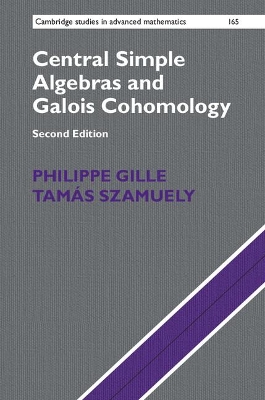Cambridge Studies in Advanced Mathematics
2 total works
Central Simple Algebras and Galois Cohomology
by Philippe Gille and Tamas Szamuely
Published 1 January 2006
The first comprehensive, modern introduction to the theory of central simple algebras over arbitrary fields, this book starts from the basics and reaches such advanced results as the Merkurjev-Suslin theorem, a culmination of work initiated by Brauer, Noether, Hasse and Albert, and the starting point of current research in motivic cohomology theory by Voevodsky, Suslin, Rost and others. Assuming only a solid background in algebra, the text covers the basic theory of central simple algebras, methods of Galois descent and Galois cohomology, Severi-Brauer varieties, and techniques in Milnor K-theory and K-cohomology, leading to a full proof of the Merkurjev-Suslin theorem and its application to the characterization of reduced norms. The final chapter rounds off the theory by presenting the results in positive characteristic, including the theorems of Bloch-Gabber-Kato and Izhboldin. This second edition has been carefully revised and updated, and contains important additional topics.
Ever since the concepts of Galois groups in algebra and fundamental groups in topology emerged during the nineteenth century, mathematicians have known of the strong analogies between the two concepts. This book presents the connection starting at an elementary level, showing how the judicious use of algebraic geometry gives access to the powerful interplay between algebra and topology that underpins much modern research in geometry and number theory. Assuming as little technical background as possible, the book starts with basic algebraic and topological concepts, but already presented from the modern viewpoint advocated by Grothendieck. This enables a systematic yet accessible development of the theories of fundamental groups of algebraic curves, fundamental groups of schemes, and Tannakian fundamental groups. The connection between fundamental groups and linear differential equations is also developed at increasing levels of generality. Key applications and recent results, for example on the inverse Galois problem, are given throughout.

